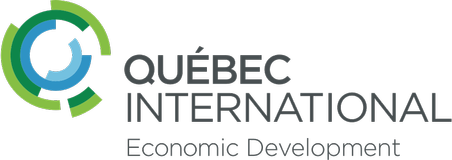Summary
With a little over $5.7B in spending intentions in 2023,1 non-residential tangible capital investment in the Québec City census metropolitan area (CMA) jumped 5.6% compared to 2022, when the region had registered $5.4B in investments, according to preliminary numbers. This growth is mostly explained by construction activities, which attracted more than half of expenditure intentions (62.9%), against slightly more than one third (37.1%) in machinery and equipment.
In particular, the CMA’s building construction sector (residential and non-residential) registered a drop of 12.7%. Residential construction is what pulled the numbers down, with a 22.4% drop in investments. In comparison, non-residential building construction increased 9.4%.
It was a challenging year for the province’s venture capital sector, with the Québec City region recording a drop of 39% in this type of investment. While the region does not pull its relative weight in terms of venture capital, it does represent more than twice its weight in terms development capital. However, it is still struggling to recover its high from 2019, when the region registered the highest venture capital investment in the province.
Despite a relatively challenging year due to the economic situation, the region managed to maintain its attractiveness. Indeed, Québec International supported several foreign direct investment projects in the region, with investments from the businesses reaching over $990M in value, including the establishment of four Microsoft data centres generating investments of $685M.
Investment in 2024 will depend on the Bank of Canada’s decisions regarding the key interest rate. Let us note that at the beginning of the year, the Conjoncture survey revealed that only 56% of businesses were planning on investing.
Conclusion
During 2023, non-residential tangible investment in the Québec City CMA increased by 5.6% compared to 2022. Most of this growth was generated by construction activities, which attracted more than half of expenditure intentions (62.9%), against slightly more than one third (37.1%) in machinery and equipment.
The breakdown of these expenditures by type of industry shows that service-producing industries attracted 82.1% of investments ($4.7B), against 17.9% ($1B) for goods-producing industries. The data also shows that 42.3% of the amounts invested ($2.4B) came from the private sector. While private investment increased by 6.3%, the proportion of public investment for these expenditures marked a 5.1% increase.
In particular, the Québec City CMA’s building construction sector (residential and non-residential) registered a drop of 12.7%. Residential investment registered a sharp decrease in that sector (-22.4%). The good performance of the non-residential sector (9.4%) was tempered by the institutional and government segment, whose expenditures decreased by 14.1%.
It was a challenging year for the province’s venture capital sector, with the Québec City region recording a drop of 39% in this type of investment. Let us not forget that development capital grew by 30%, a unique phenomenon compared to what was observed in the other regions in 2023.
The slowdown in investment, combined with sustained growth in employment and net migration, will lead to an increased demand in the housing market in the coming years. The near-zero vacancy rate in the rental market will add pressure on this sector, which will require major investments for the construction of new housing units. Otherwise, the prices will likely increase significantly and negatively impact housing accessibility and affordability in the region.




